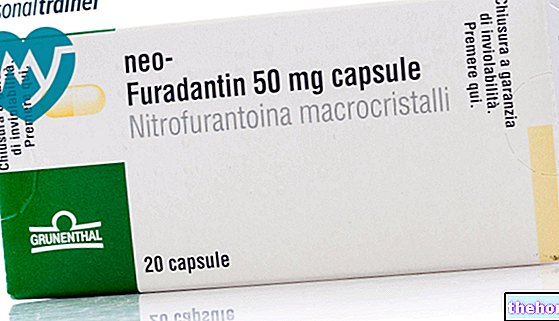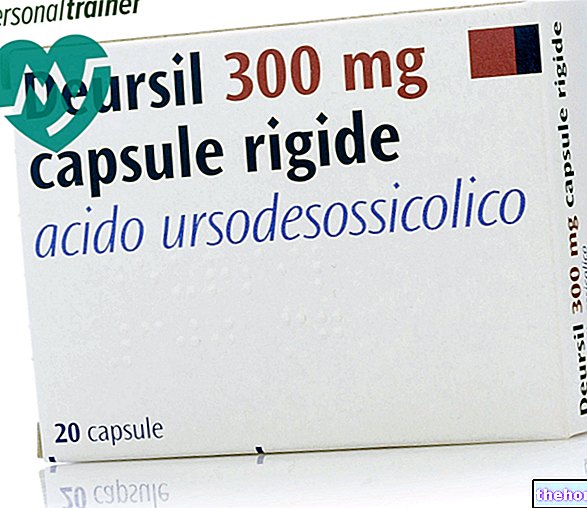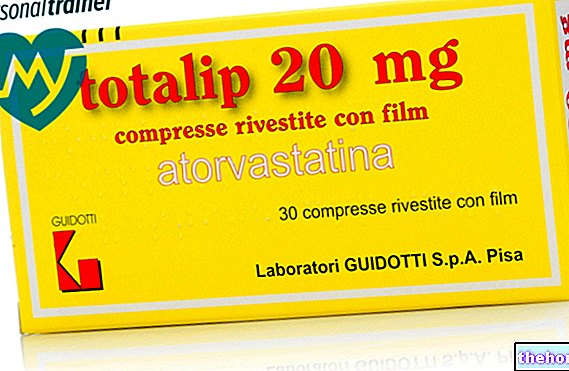Active ingredients: Flumazenil
Anexate 0.5 mg / 5 ml solution for injection for intravenous use
Anexate 1 mg / 10 ml solution for injection for intravenous use
Indications Why is Anexate used? What is it for?
Anexate contains the active substance flumazenil, a medicine that blocks the feeling of sleepiness and the calming and relaxing effects induced by a class of medicines called "benzodiazepines" with sedative and anxiolytic properties that can induce sleep and muscle relaxation.
Anexate works by reducing sleep and the sense of drowsiness, causing awakening and returning to consciousness.
- Anexate is indicated in the adults in the following cases:
- to awaken you from general anesthesia (state of general numbness of the body with loss of consciousness) induced and maintained by benzodiazepines during surgery
- to stop the calming effect and the feeling of sleepiness caused by benzodiazepines during a medical examination or therapy in a hospital or outpatient setting
- to stop reactions defined as paradoxical (some side effects that may occur following the use of benzodiazepines.
- to treat the effects caused by the voluntary or accidental intake of an excessive amount of benzodiazepines and to cancel its effects in the brain (restoring the ability to breathe autonomously and regain consciousness, without requiring the insertion of a tube in the respiratory tract or to allow its removal).
- Anexate is indicated in children older than one year to stop the sense of drowsiness and the calming and relaxing effects induced by benzodiazepines
Contraindications When Anexate should not be used
You must not be given Anexate to yourself and / or your child
- if you are allergic to flumazenil or any of the other ingredients of this medicine)
- if you have taken or have been given a benzodiazepine to treat a disease that you suffer from and which is life-threatening, for example: increased pressure in the skull (intracranial hypertension), continuous seizures without full recovery of consciousness ( state of epilepticus).
Precautions for use What you need to know before taking Anexate
This medicine is only available in the hospital. Therefore, this medicine is only administered under the strict supervision of qualified medical personnel.
- Before this medicine is given your doctor will check your / baby's health to weigh the benefits of treatment with Anexate against the potential risks.
- After you are given Anexate, your doctor will monitor you and / or your baby for at least 24 hours, and will check for any side effects.
- In case of previous treatment with benzodiazepines in high doses and / or for long periods, the doctor will avoid the rapid injection of Anexate at a dose equal to or greater than 1 mg as you / the child may experience withdrawal symptoms such as palpitations (feeling of increased heartbeat), agitation, anxiety, emotional disturbances, as well as confusion and mild changes in the senses.
In any case, the doctor will evaluate the advantages of using Anexate compared to the possible risks of the appearance of withdrawal symptoms. If the doctor decides to administer Anexate, he will carefully evaluate the dose and will adopt the appropriate therapy in case you / the child exhibited withdrawal symptoms.
Before you are given Anexate, tell your doctor if you and / or your child:
- you suffer from any disease for example if you have heart problems
- you suffer from anxiety, as your doctor will have to carefully evaluate the dose of Anexate to administer to you
- suffer from liver problems, as your doctor will have to carefully evaluate the dose of Anexate to administer
- you are abusing or have abused multiple medications, especially benzodiazepines and cyclic antidepressants (medicines for depression), as you may experience seizures and disturbances in the rhythm of your heartbeat
- you have epilepsy and have been on benzodiazepines for a long time, as you / your child may have seizures
- you have brain lesions and are being treated with benzodiazepines, as you may experience seizures and altered blood flow and pressure in the brain.
Children and adolescents
Children under one year of age
Caution should be exercised in the use of Anexate in children under one year of age as limited data is available. Until sufficient data are available, the doctor will only administer Anexate to children under one year of age after having assessed the benefits of treatment with Anexate against the potential risks to the child, especially in the event of an accidental overdose.
Children older than one year
Anexate can be given to children over one year of age to stop the feeling of sleepiness and the calming and relaxing effects induced by benzodiazepines.
Interactions Which drugs or foods may change the effect of Anexate
Tell your doctor, nurse or pharmacist if you / your child are taking, have recently taken or might take any other medicines.
In particular, tell your doctor if you / your child are taking the following medicines:
- benzodiazepines (especially if in high doses and / or for a long time) or medicines similar to benzodiazepines such as zopiclone, triazolopyridazines.
No interactions have been found with other medicinal products with central nervous system depressant effect. Blood levels of Anexate are not affected when Anexate is administered concomitantly with the benzodiazepines midazolam, flunitrazepam and lormetazepam.
There are no interactions between ethanol and Anexate affecting blood levels of Anexate
Warnings It is important to know that:
Pregnancy and breastfeeding
If you are pregnant, think you may be pregnant or are planning to have a baby, or if you are breast-feeding, please tell your doctor or nurse before you are given this medicine.
Pregnancy
The safety of using Anexate in pregnancy has not been established. If you are pregnant, your doctor will evaluate the benefits of using Anexate for the mother against the potential risks to the fetus.
Feeding time
It is not known if Anexate passes into breast milk. If you are breast-feeding, your doctor will decide whether to give you Anexate based on your condition and the severity of the case.
Driving and using machines
Do not engage in occupations that require vigilance, such as driving vehicles (including cycling) and operating machinery during the first 24 hours after Anexate is given. Your doctor will consider whether you should be accompanied when leaving the hospital.
Anexate contains sodium
This medicine contains less than 1 mmol (23 mg) sodium per milliliter.
Dosage and method of use How to use Anexate: Dosage
This medicine is only available in the hospital. Therefore, this medicine is only administered under the strict supervision of qualified medical personnel.
Adults and children over one year of age
The most suitable dose is determined by the doctor on the basis of age, weight, general state of health, how you / the child respond to the treatment, the side effects that you / the child may experience and the possible use of others. medicines.
The dose and rate of administration will be individually adjusted until the desired awakening is achieved.
Anexate is given into a vein (by injection or by infusion using a drip) by qualified medical personnel (your anesthetist or an experienced doctor).
If you / your child have liver problems or anxiety
If you / your child have liver problems or anxiety, your doctor will carefully consider the dose of Anexate to be given.
Overdose What to do if you have taken too much Anexate
If more Anexate is given than you should
If an overdose of Anexate is given, your doctor will take general supportive measures (such as checking your vital signs and general health).
Side Effects What are the side effects of Anexate
Like all medicines, this medicine can cause side effects, although not everybody gets them.
Anexate is well tolerated in both adults and children. Side effects usually resolve quickly without the need for special treatments. The side effects that you / your child may experience after administration of Anexate are listed below according to the following frequency:
Common (may affect up to 1 in 10 people)
- nausea
- He retched
These side effects can occur with the use of Anexate to wake you up after surgery, especially if opioids (medicines to prevent and relieve pain during surgery) have also been used for anesthesia.
Uncommon (may affect up to 1 in 100 people)
- anxiety and fear. These side effects occur after injecting the Anexate solution too quickly
- palpitations (feeling of increased heartbeat). This side effect occurs after injecting the Anexate solution too quickly and does not generally require treatment.
Not known (frequency cannot be estimated from the available data)
- allergic reactions (including anaphylactic reactions)
- withdrawal symptoms (e.g. agitation, anxiety, emotional disturbances, confusion, altered senses). These effects occur after too rapid injection of the Anexate solution and if you are being treated with benzodiazepines in high doses and / or for long periods.
- panic attacks. This side effect occurs if you have suffered from panic attacks in the past.
- abnormal crying
- agitation
- aggressive reactions
- Seizures. This effect occurs if you have epilepsy or severe liver problems and especially if you have previously taken benzodiazepines for a long time or have abused multiple drugs.
- temporary increase in blood pressure. This side effect can occur upon waking.
- redness
- chills. This side effect occurs after injecting the Anexate solution too quickly and does not generally require treatment.
Reporting of side effects
If you get any side effects, talk to your doctor or nurse or pharmacist. This includes any possible side effects not listed in this leaflet. You can also report side effects directly via the national reporting system at https: //www.aifa. .gov.it / content / adverse-reaction-reports
By reporting side effects you can help provide more information on the safety of this medicine
Expiry and Retention
Keep this medicine out of the sight and reach of children.
This medicine does not require any special storage conditions.
Do not use this medicine after the expiry date which is stated on the carton after EXP. The expiry date refers to the last day of that month.
Do not throw any medicines via wastewater or household waste. Ask your pharmacist how to throw away medicines you no longer use. This will help protect the environment.
What Anexate contains
Anexate 0.5 mg / 5 ml solution for injection for intravenous use
- the active substance is: flumazenil (one 5 ml ampoule contains 0.5 mg flumazenil)
- the other ingredients are: sodium edetate, glacial acetic acid, sodium chloride (see section "Anexate contains sodium"), water for injections.
Anexate 1 mg / 10 ml solution for injection for intravenous use
- the active substance is: flumazenil (one 10 ml ampoule contains 1 mg of flumazenil)
- the other ingredients are: sodium edetate, glacial acetic acid, sodium chloride (see section "Anexate contains sodium"), water for injections.
What Anexate looks like and contents of the pack
Anexate comes as a clear and transparent solution to be administered into a vein, contained in a 5 ml or 10 ml clear glass vial. Each pack of Anexate contains 1 vial.
Not all pack sizes may be marketed.
Source Package Leaflet: AIFA (Italian Medicines Agency). Content published in January 2016. The information present may not be up-to-date.
To have access to the most up-to-date version, it is advisable to access the AIFA (Italian Medicines Agency) website. Disclaimer and useful information.
01.0 NAME OF THE MEDICINAL PRODUCT
ANEXATE SOLUTION FOR INJECTION FOR INTRAVENOUS USE
02.0 QUALITATIVE AND QUANTITATIVE COMPOSITION
Anexate 0.5 mg / 5 ml solution for injection for intravenous use
One vial contains:
Active ingredient: flumazenil 0.5 mg
Anexate 1 mg / 10 ml solution for injection for intravenous use
One vial contains:
Active ingredient: flumazenil 1 mg
For excipients, see 6.1.
03.0 PHARMACEUTICAL FORM
Solution for injection intravenously.
04.0 CLINICAL INFORMATION
04.1 Therapeutic indications
Anexate is indicated to neutralize the central sedative effects of benzodiazepines. It is therefore used in anesthesia and in intensive care in the following conditions:
Anesthesia
Discontinuation of induced and maintained general anesthesia with benzodiazepines in hospitalized and outpatient patients;
cancellation of benzodiazepine sedation in short diagnostic and therapeutic procedures in hospitalized and outpatient patients;
neutralization of paradoxical reactions due to benzodiazepines.
Intensive care
For the treatment of voluntary or accidental overdose of benzodiazepines; as a specific agent in the cancellation of the central effects of benzodiazepines in cases of drug overdose (return to spontaneous breathing and consciousness in order to no longer need endotracheal intubation or to allow extubation).
It is indicated for the neutralization of the sedative effects of benzodiazepines in children over one year of age.
04.2 Posology and method of administration
Anexate should be used intravenously by an anesthetist or otherwise by an experienced clinician.
It can be administered as such or diluted. For intravenous infusion it can be diluted in 5% glucose solution or 0.9% physiological solution and can also be used in conjunction with other resuscitation procedures. Anesthesia
The recommended starting dose is 0.2 mg administered intravenously over approximately 15 seconds.
If the desired degree of consciousness is not achieved within 60 seconds, a second dose of 0.1 mg may be injected which may be repeated every 60 seconds if necessary until a total dose of 1 mg is reached.
The usual dose is 0.3-0.6 mg.
Intensive care
The recommended starting dose is 0.3 mg intravenously. If the desired degree of consciousness is not achieved within 60 seconds, Anexate can be repeated with a dose of 0.1 mg until the patient awakens or until a total dose of 2 mg is achieved.
If somnolence recurs, 0.1-0.4 mg of the drug can be injected over a 1-hour intravenous perfusion.
The dosage and rate of perfusion should be individually adjusted until the desired awakening is achieved.
In intensive care units, Anexate administered in slow perfusion and appropriately diluted should not cause withdrawal symptoms in patients treated for prolonged periods of time with large doses of benzodiazepines.
If unexpected signs of over-stimulation occur, 5 mg of diazepam or 5 mg of midazolam should be administered intravenously.
If repeated doses of Anexate do not produce improvement in respiratory function and consciousness, a different (non-benzodiazepine) etiology should be considered.
Hepatic impairment:
Since flumazenil is metabolised primarily in the liver, careful dose titration is recommended in patients with impaired hepatic function.
Children older than one year
To counteract the sedative effects induced by benzodiazepines in children over one year of age, the recommended starting dose is 0.01 mg / kg (up to 0.02 mg) administered intravenously over 15 seconds. If the desired degree of consciousness is not achieved after a "wait of an additional 45 seconds, a" further injection of 0.01 mg / kg can be administered (up to 0.02 mg) and repeated at 60 second intervals if necessary ( up to a maximum of 4 times) for a maximum total dose of 0.05 mg / kg or 1 mg, whichever is the lower. The dose should be individualized according to the patient's response. There are no data available on the safety and efficacy of repeated administration of Anexate to children for resedation.
04.3 Contraindications
Hypersensitivity to the active substance or to any of the excipients.
The use of Anexate is contraindicated in patients who have been administered a benzodiazepine for the treatment of a potentially life-threatening condition (eg intracranial hypertension or status epilepticus).
04.4 Special warnings and appropriate precautions for use
Keep out of the reach and sight of children.
Patients should be kept under medical supervision for up to 24 hours after the administration of Anexate.
Elimination may be delayed in patients with hepatic impairment.
Particular caution is required when using Anexate in cases of multiple drug overdose. In particular in the case of intoxication with benzodiazepines and cyclic antidepressants, some toxic effects such as convulsions and cardiac arrhythmias, which are caused by antidepressants but which occur less rapidly in conjunction with administration with benzodiazepines, are exacerbated by the administration of Anexate.
The use of Anexate is not recommended in epileptic patients treated with benzodiazepines for a prolonged period. Despite the mild intrinsic anticonvulsant effect of Anexate, the sudden suppression of the protective effect of the benzodiazepine agonist may lead to seizures in patients. epileptics.
Patients treated with Anexate for the neutralization of the benzodiazepine effect should be monitored, preferably in an intensive care unit, for the possible return of sedation, respiratory depression or other residual benzodiazepine effects, for a period of adequate time, assessed on the basis of the dose and duration of action of the benzodiazepine used, until the effect of Anexate is eliminated. Since delayed effects as described above may occur for patients with impaired hepatic function, a prolonged observation period may be required..
The antagonistic effect of Anexate is specific for benzodiazepines, the effect is therefore not expected if the "non-awakening" is caused by other substances.
In anesthesiology at the end of surgery, Anexate must not be administered before the disappearance of the muscle relaxant effect on the peripheral muscles.
Anexate should be used with caution in patients with brain injuries as it may induce seizures or impair cerebral blood flow in patients being treated with benzodiazepines. In patients with severe brain damage (and / or unstable intracranial pressure) who are treated with Anexate - to counteract the effects of benzodiazepines - an increase in intracranial pressure may develop.
Rapid injection of the drug in doses of 1 mg or greater in patients who have received high-dose and / or prolonged benzodiazepine treatment, terminated at any time in the weeks prior to Anexate administration, may cause withdrawal symptoms such as palpitations, agitation, anxiety, emotional lability, as well as confusion and mild sensory changes and should therefore be avoided.
Anexate is neither indicated for the treatment of benzodiazepine dependence nor for the management of protracted benzodiazepine withdrawal syndromes.
In high-risk patients, the benefits of benzodiazepine-induced sedation must be weighed against the risks of a rapid return to consciousness. In patients (e.g. with heart problems), maintaining some degree of sedation during the early postoperative period may be preferable for complete consciousness.
In pre-operative anxious patients or in patients known to suffer from chronic or transient anxiety, the dosage of Anexate should be carefully adjusted.
For patients who have been chronically treated with high doses of benzodiazepines, the benefits of using Anexate should be carefully weighed against the possible risks of withdrawal symptoms. If, despite careful dosing, withdrawal symptoms occur, it can be considered. if necessary, treatment with low doses of benzodiazepines, titrated intravenously based on the patient's response.
However, pain sensation after surgery should be taken into account, and it may be preferable to keep the patient lightly sedated.
Anexate should be used with caution in neutralizing conscious sedation in children under one year of age, in resuscitating the newborn and in neutralizing the sedative effects of benzodiazepines used in the induction of general anesthesia in children, as the available data in this regard they are limited. Until sufficient data are available, Anexate should only be administered to children under one year of age if the risk to the patient (especially in the event of an accidental overdose) has been weighed against the benefits of treatment. Anexate contains less than 1 mmol (23 mg) of sodium per milliliter
04.5 Interactions with other medicinal products and other forms of interaction
Anexate blocks the central effect of benzodiazepines by competitive interaction at the receptor level; the effect on benzodiazepine receptors of non-benzodiazepine agonists such as zopiclone, triazolopyridazines and others is also blocked by Anexate.
No interactions have been found with other CNS depressant drugs. The pharmacokinetics of benzodiazepines do not undergo alterations in the presence of Anexate.
The pharmacokinetic parameters of Anexate are not affected when Anexate is administered concomitantly with the benzodiazepines midazolam, flunitrazepam and lormetazepam.
There are no pharmacokinetic interactions between ethanol and flumazenil.
04.6 Pregnancy and lactation
Although in vitro studies and the administration of high doses of Anexate in animals have not revealed problems with embryo-toxicity, teratogenicity or impaired fertility, the safety of the use of Anexate in pregnancy has not been established. For this reason, the benefits deriving from the use of the drug in pregnancy must be evaluated taking into account the possible risks to the fetus. The efficacy in the fetus has not been evaluated in animal studies.
It is not known whether Anexate is excreted in human milk. Parenteral administration of Anexate in emergency cases is not contraindicated in breastfeeding.
04.7 Effects on ability to drive and use machines
Although administration of Anexate results in awakening and a good degree of alertness, patients should be advised not to engage in risky occupations requiring a state of mind of total alertness, such as operating on dangerous machinery or driving vehicles during the first 24 hours after administration of Anexate. , as the effect of the benzodiazepines originally ingested or administered may return.
04.8 Undesirable effects
Anexate was well tolerated in both adults and children. In adults Anexate is well tolerated even at doses higher than those recommended. No cases of renal or hepatic impairment have been reported.
Sometimes nausea and / or vomiting may appear during use in anesthesiology.
Hypersensitivity reactions including anaphylaxis have been observed.
In rare cases, disturbances such as sense of anxiety, palpitations and phobias have appeared following too rapid injection of the drug. However, no particular treatment of these manifestations was ever necessary.
Convulsions have been reported in patients with epilepsy or severe hepatic insufficiency, especially at the end of prolonged treatment with benzodiazepines or in the case of multiple drug overdose.
In case of overdose of several drugs, especially with tricyclic antidepressants, the neutralization of the activity of benzodiazepines obtained with Anexate can bring out some toxic effects, such as convulsions and alterations in the heart rhythm. abstinence in patients undergoing high dose and / or prolonged benzodiazepine treatment, terminated at any time in the weeks prior to Anexate administration.
Panic attacks caused by Anexate have been recorded in patients who had previously suffered from similar ailments.
Adverse events listed below have been reported. These adverse events usually subside rapidly without the need for special treatment.
Frequency categories were defined using the following conventions: very common (≥1 / 10); common (≥1 / 100 to
Disorders of the immune system :
Not known: Hypersensitivity reactions, including anaphylaxis, may occur.
Psychiatric disorders
Uncommon: anxiety, fear: following quick injections, generally do not require treatment.
Not known: Withdrawal symptoms (e.g. agitation, anxiety, emotional lability, confusion, sensory distortion), following rapid injection of doses of 1 mg or higher in patients treated with high doses or for long periods with benzodiazepines at any time within the weeks prior to the administration of Anexate (see section 4.4); panic attacks (in patients with previous panic reactions); abnormal crying, agitation and aggressive reactions (the side effect profile in children is generally similar to adults. When Anexate has been used to neutralize conscious sedation, abnormal crying, agitation and aggressive reactions have been reported).
Nervous system disorders
Not known: Seizures: particularly in patients who usually suffer from epilepsy or severe hepatic impairment, especially after long-term treatment with benzodiazepines or in the case of multiple drug overdose (see section 4.4)
Cardiac pathologies
Uncommon: Palpitations: following a quick injection, generally does not require treatment.
Vascular pathologies
Not known: Transient rise in blood pressure (upon awakening) Gastrointestinal disorders
Common: Nausea, vomiting: during post-operative use, particularly if opioids have also been used.
Skin and subcutaneous tissue disorders
Not known: Redness
General disorders and administration site conditions
Not known: Chills: following a quick injection. It generally does not require treatment.
Reporting of suspicions and adverse reactions
Reporting of suspected adverse reactions occurring after authorization of the medicinal product is important as it allows continuous monitoring of the benefit / risk balance of the medicinal product. Healthcare professionals are asked to report any suspected adverse reactions via the national reporting system. "address https://www.aifa.gov.it/content/segnalazioni-reazioni-avverse".
04.9 Overdose
In case of overdose of several drugs, in particular with tricyclic antidepressants, toxic effects may arise (such as convulsions and heart rhythm alterations) with the neutralization of the benzodiazepine effect by Anexate.
Human experience of acute overdose with Anexate is very limited.
There is no specific antidote to overdose with Anexate. Treatment of an overdose should consist of general supportive measures, including monitoring of vital signs and monitoring of the patient's clinical status.
Even at doses higher than those recommended, even at dosages of 100 mg i.v., no symptoms of overdose have been reported.
05.0 PHARMACOLOGICAL PROPERTIES
05.1 Pharmacodynamic properties
Pharmacotherapeutic group: antidote
ATC code: V03AB25
Mechanism of action
Anexate, an imidazobenzodiazepine, is a benzodiazepine antagonist that specifically blocks the central effect of drugs acting through benzodiazepine receptors by competitive inhibition.
Studies in animals show how the effects of compounds with affinity towards benzodiazepine receptors are blocked.
In healthy volunteers Anexate administered intravenously has been shown to be able to antagonize the sedation, amnesia and psychomotor deficit produced by benzodiazepine agonists.
The hypnotic-sedative effect of benzodiazepines regresses rapidly (1-2 minutes) after intravenous administration of Anexate; in some cases it may gradually reappear in the following hours, depending on the half-life and the dose ratio between agonist and antagonist.
Anexate is well tolerated even in high doses.
Anexate may have weak intrinsic agonist activity, for example of the anticonvulsant type.
In animals pretreated with high-dose benzodiazepines for several weeks, Anexate causes manifestations of withdrawal, including seizures. A similar effect was seen in adult subjects.
05.2 "Pharmacokinetic properties
The pharmacokinetics of flumazenil are dose proportional over the therapeutic range and beyond (up to 100 mg).
Distribution
Anexate, a weak lipophilic base, is approximately 50% bound to plasma proteins, two thirds to albumin. Flumazenil is widely distributed in the extravascular space. Plasma concentrations of flumazenil decrease with a half-life of 4-11 minutes during the distribution phase. The steady-state volume of distribution is 0.9-1.1 L / kg.
Metabolism
Flumazenil is extensively metabolised in the liver. In "humans" carboxylic acid has been identified as the main metabolite in plasma (in the free form) and in the urine (free and glucuronate). In pharmacological tests, this metabolite was found to be inactive as a benzodiazepine agonist or antagonist.
Elimination
Flumazenil is eliminated almost completely (99%) by the kidney. Flumazenil as such is practically absent from the urine, so the drug is supposed to undergo total metabolic degradation. The elimination of the radiolabelled molecule is in fact complete in 72 hours, with 90-95% of the radioactivity present in the urine and 5-10% in the faeces. Elimination is rapid, as evidenced by the short elimination half-life, equal to 40-80 minutes.
The total plasma clearance of Anexate is 0.8-1 l / hr / kg and is almost entirely dependent on the liver.
Ingestion of food during an intravenous infusion of flumazenil results in a 50% increase in clearance, most likely due to the increased blood flow to the liver following a meal. Pharmacokinetics in particular patient groups
The elimination half-life of flumazenil is longer in patients with impaired hepatic function (75.7 ± 23.3 minutes in patients with moderate impairment and 141.7 ± 27.5 minutes in patients with severe impairment. ) total clearance is lower than in healthy subjects. The pharmacokinetics of flumazenil do not undergo significant changes in the elderly, do not differ in men from women, in hemodialysis patients or in those with renal insufficiency.
The elimination half-life in children over 1 year of age is more variable than in adults, averaging 40 minutes but with maximum and minimum values between 20 and 75 minutes. Clearance and volume of distribution, normalized for body weight values fall within the same ranges of values found in adults.
05.3 Preclinical safety data
Studies in animals revealed low toxicity and absence of mutagenic activity.
06.0 PHARMACEUTICAL INFORMATION
06.1 Excipients
sodium edetate, glacial acetic acid, sodium chloride, water for injections.
06.2 Incompatibility
The compatibility range has been verified with 0.9% NaCl, 5% glucose and 2.5% glucose + 0.45% NaCl.
The Anexate solution is physically and chemically stable for 24 hours at room temperature and in diffused daylight, when mixed with the above mentioned perfusion solutions in the ratio of 10, 20 or 50 ml of Anexate in 500 ml.
06.3 Period of validity
Expiry of the unopened package correctly stored: 5 years.
06.4 Special precautions for storage
This medicine does not require any special storage conditions. This medicine must not be used after the expiry date (EXP) which is stated on the package.
For storage conditions after dilution of the medicinal product, see section 6.2.
06.5 Nature of the immediate packaging and contents of the package
Colorless glass vial
Anexate 0.5 mg / 5 ml solution for injection for intravenous use - 1 ampoule
Anexate 1 mg / 10 ml solution for injection for intravenous use - 1 ampoule
06.6 Instructions for use and handling
For optimal sterility, Anexate should remain in the vial until use.
07.0 MARKETING AUTHORIZATION HOLDER
Roche S.p.A. - Piazza Durante 11 - 20131 Milan
08.0 MARKETING AUTHORIZATION NUMBER
AIC n ° 026749010 Anexate 0.5 mg / 5 ml solution for injection for intravenous use - 1 ampoule
AIC n ° 026749034 Anexate 1 mg / 10 ml solution for injection for intravenous use - 1 ampoule
09.0 DATE OF FIRST AUTHORIZATION OR RENEWAL OF THE AUTHORIZATION
Renewal: June 2010




























